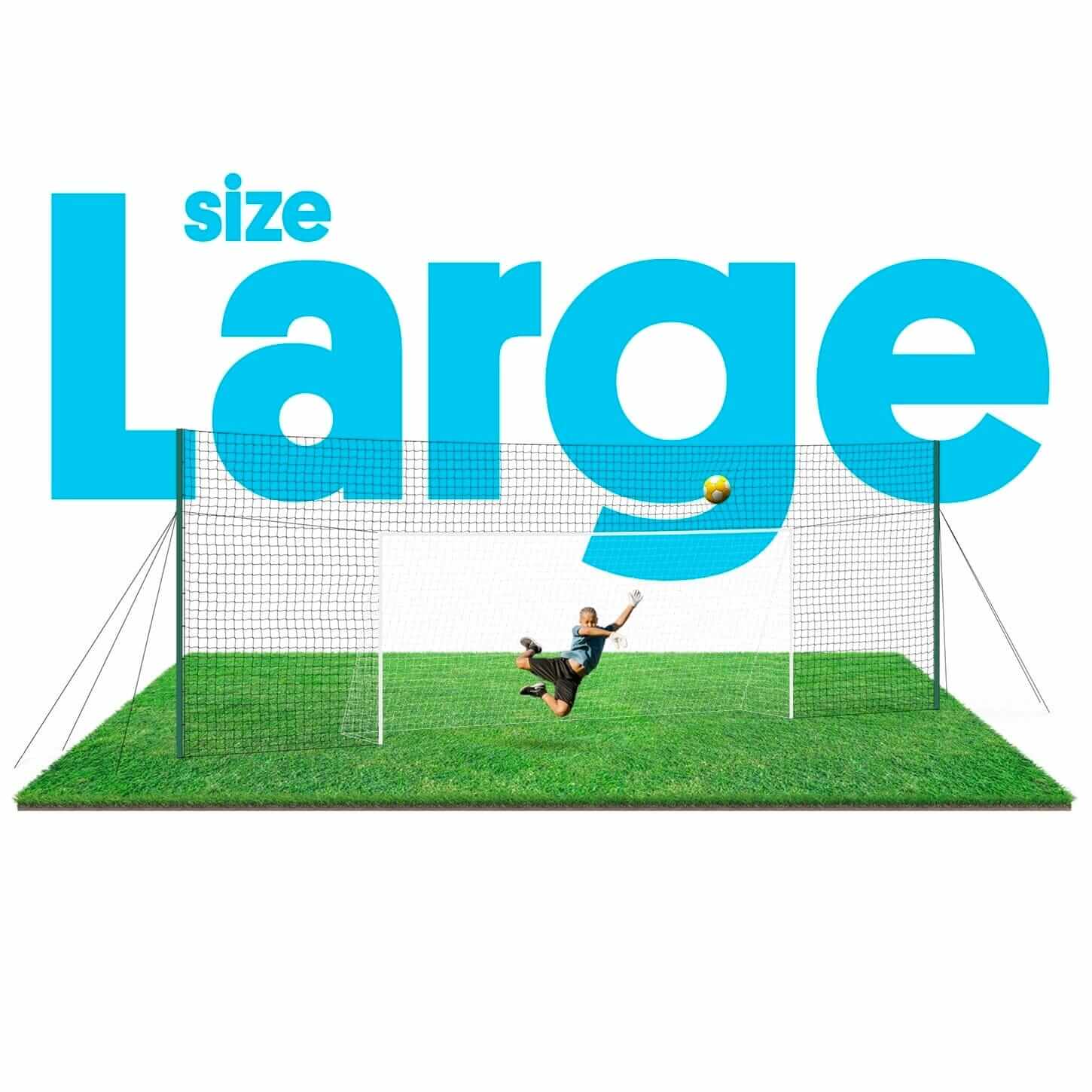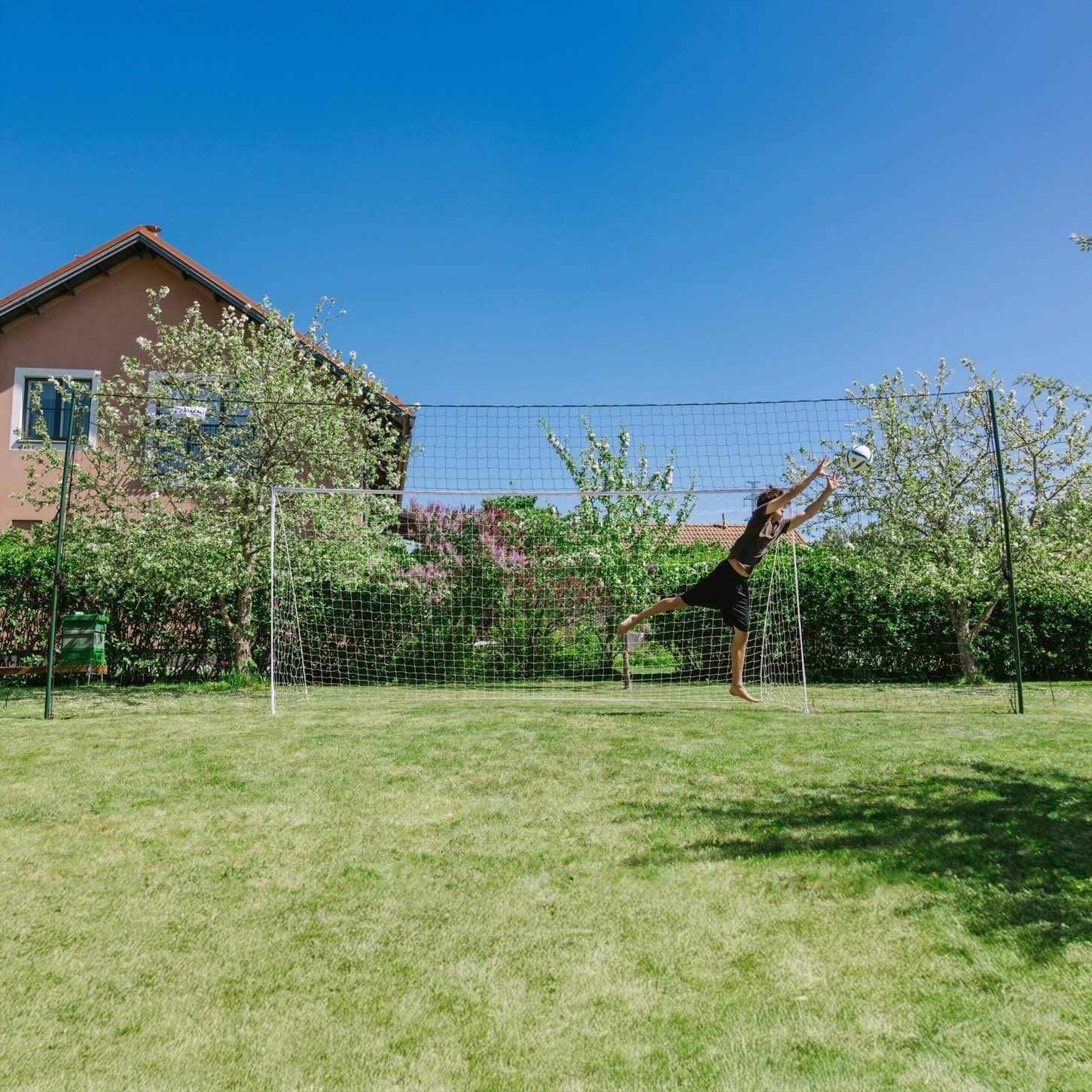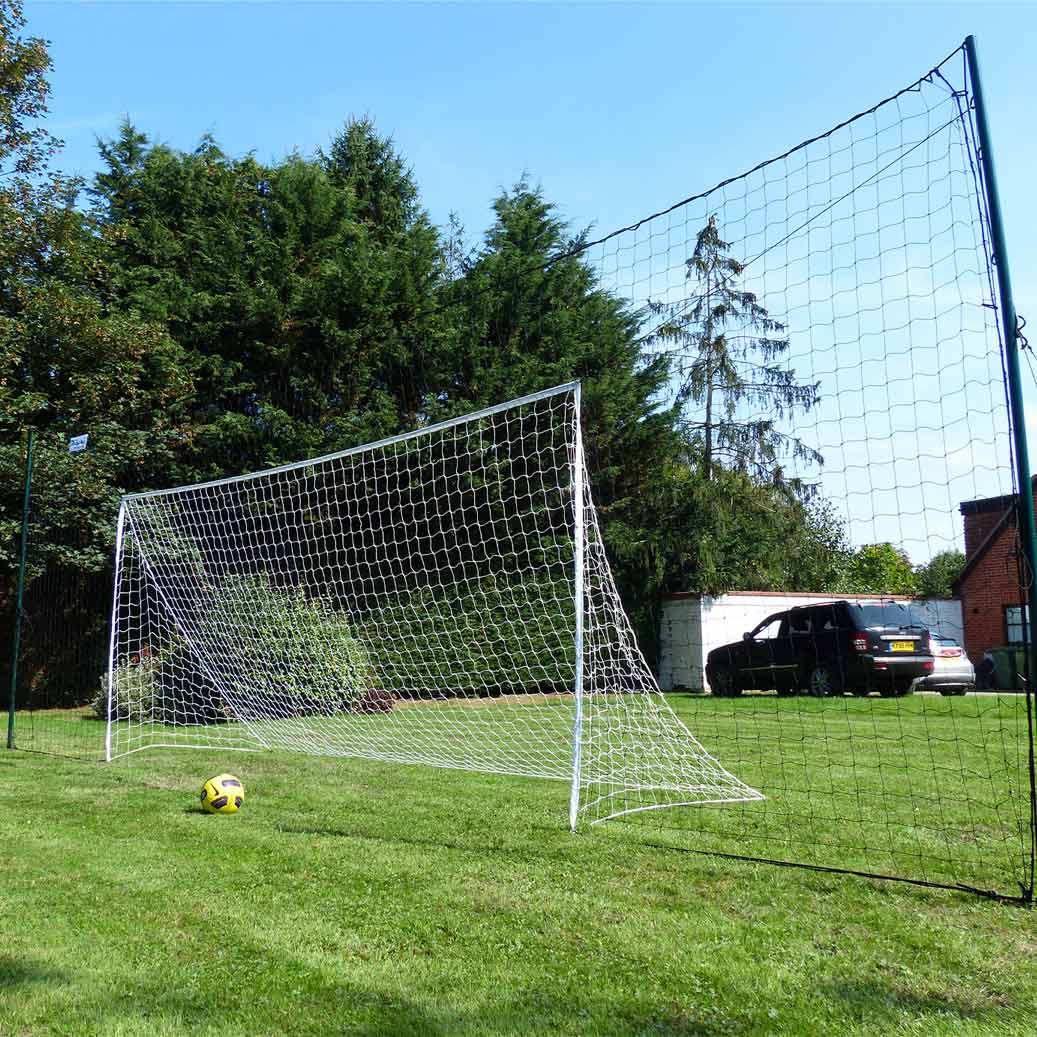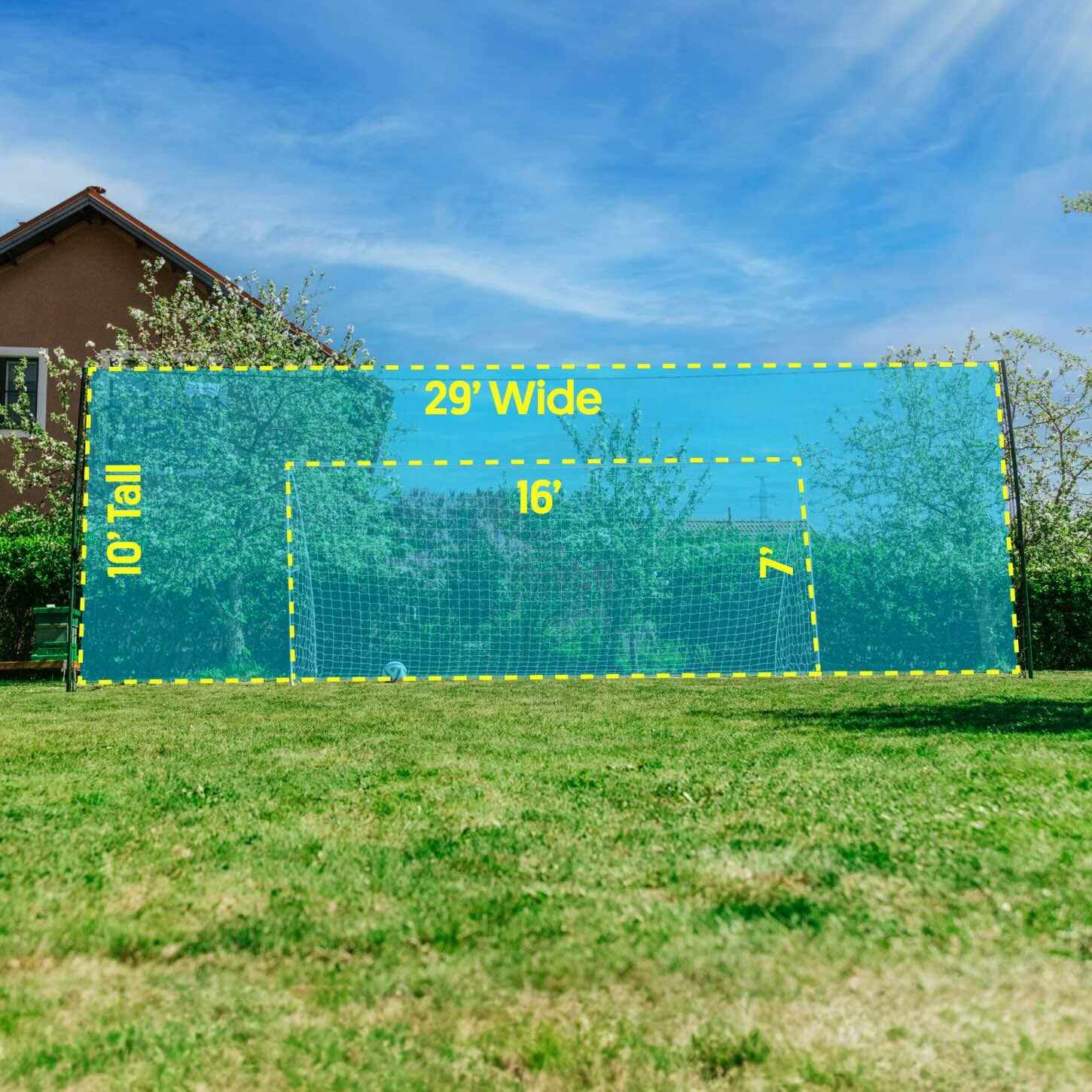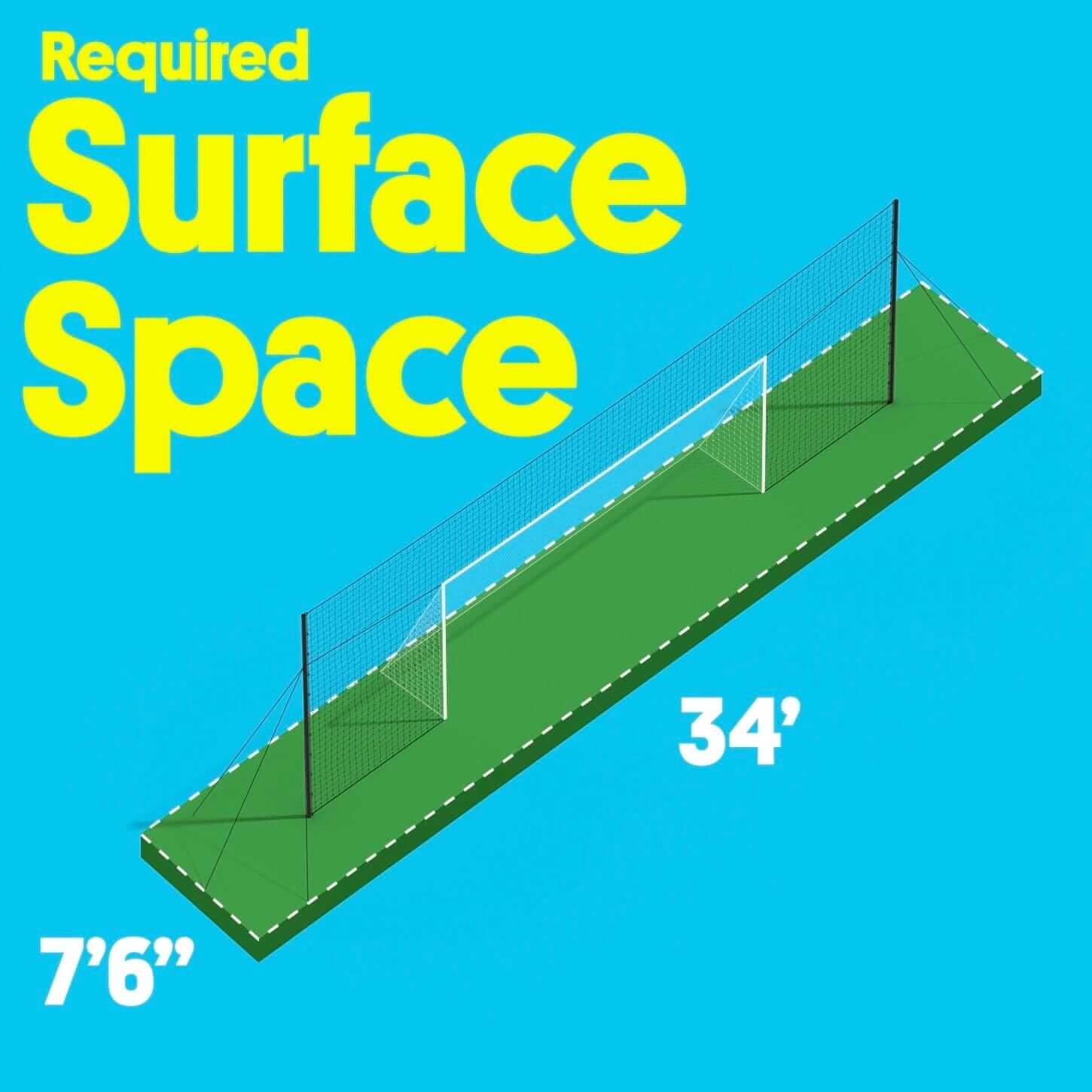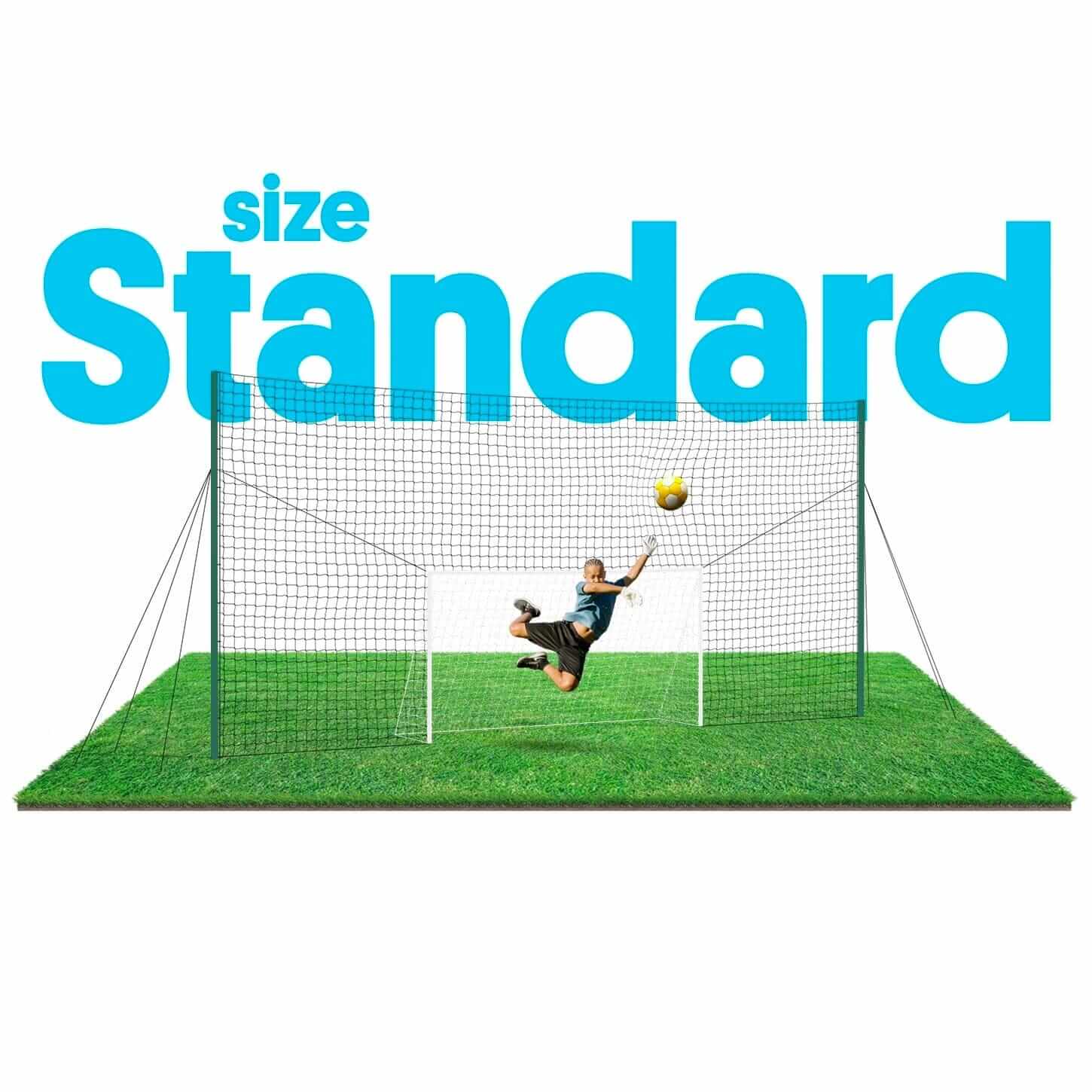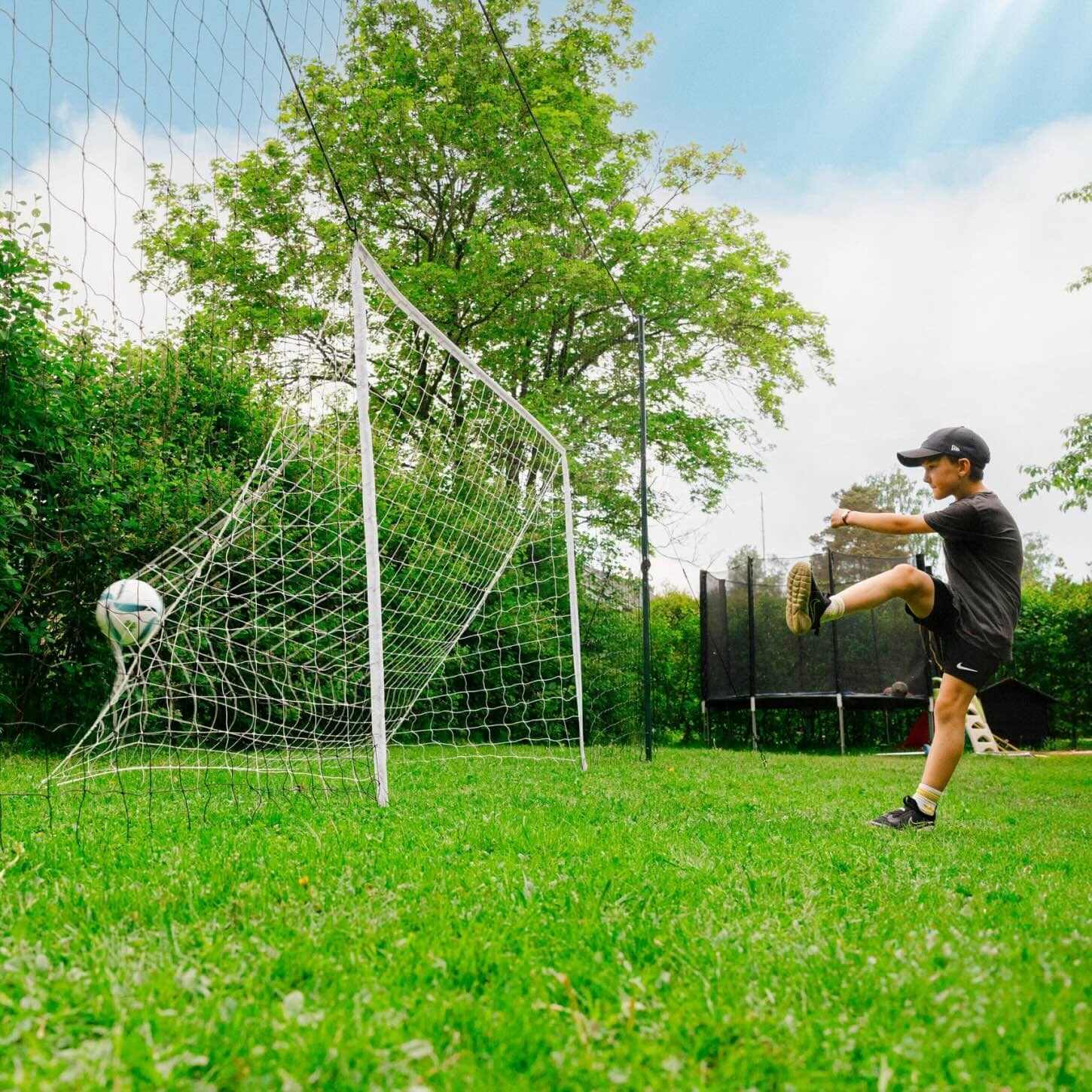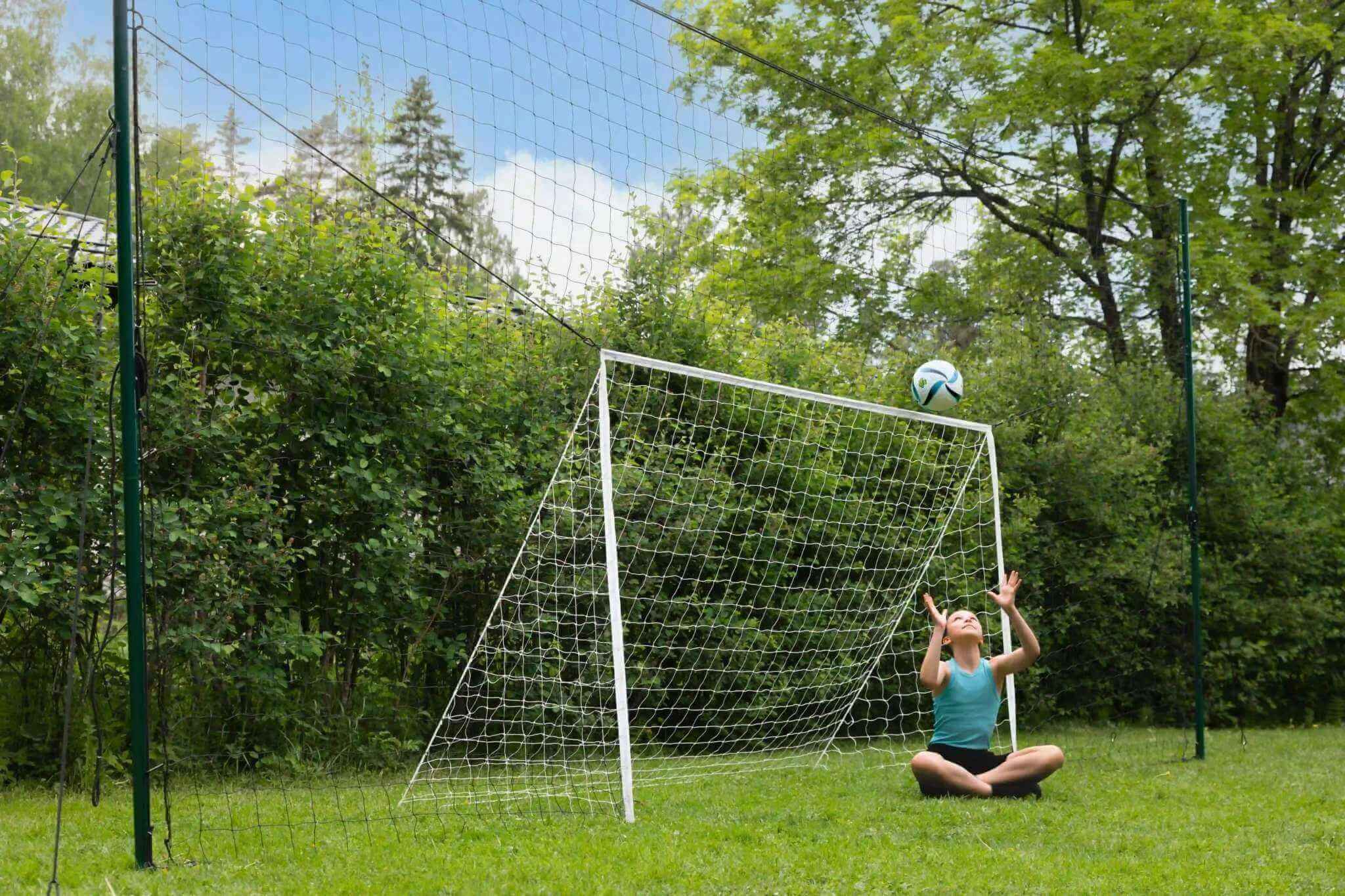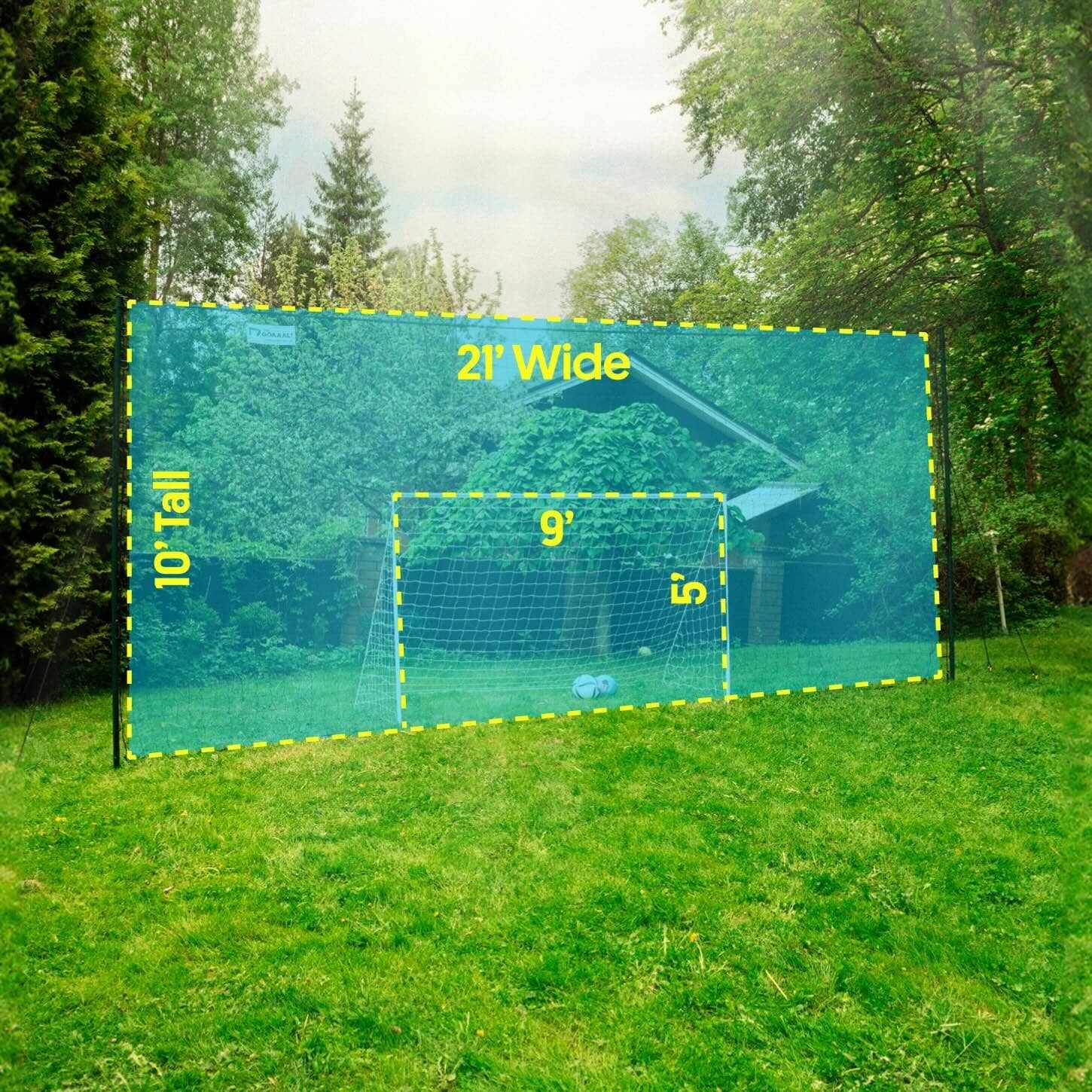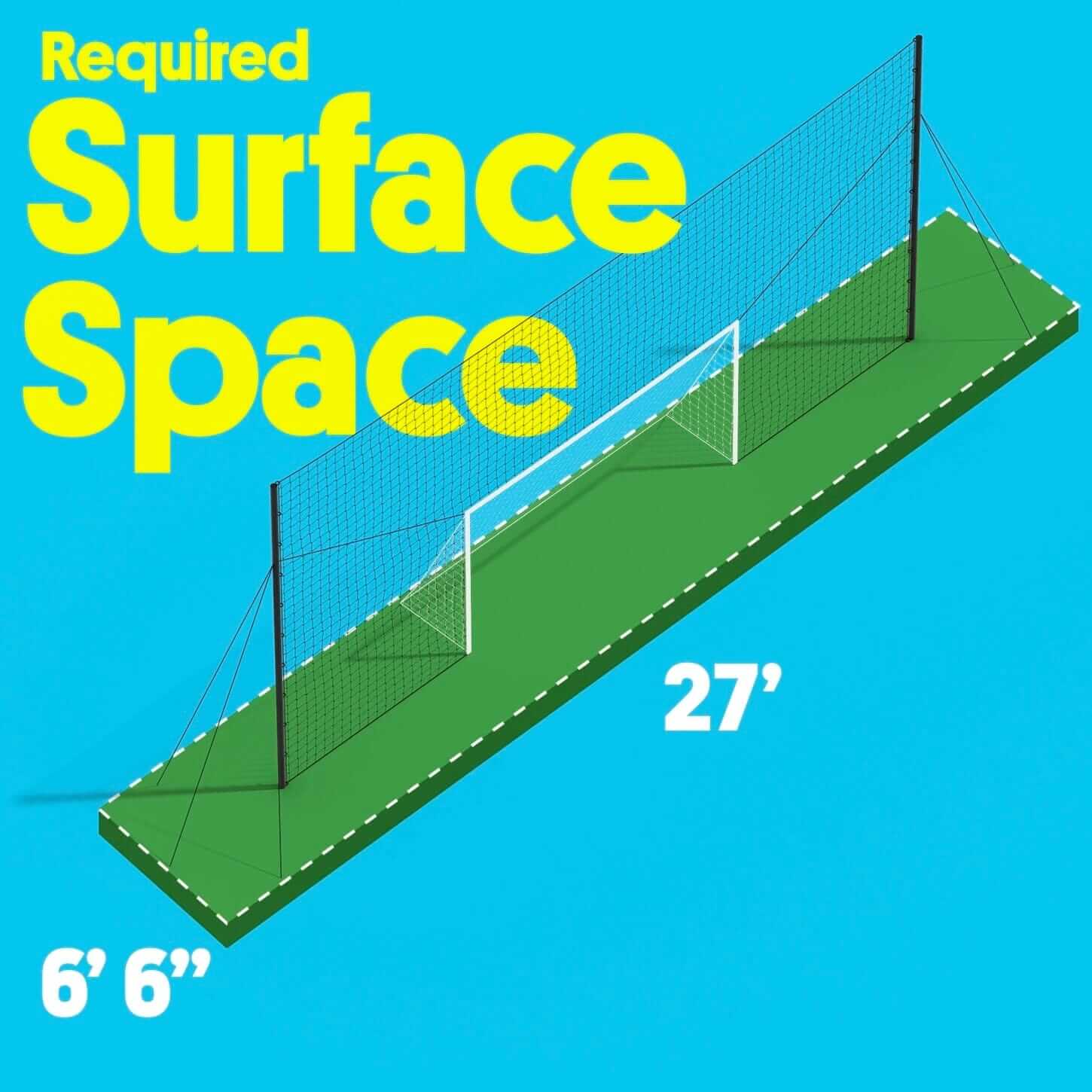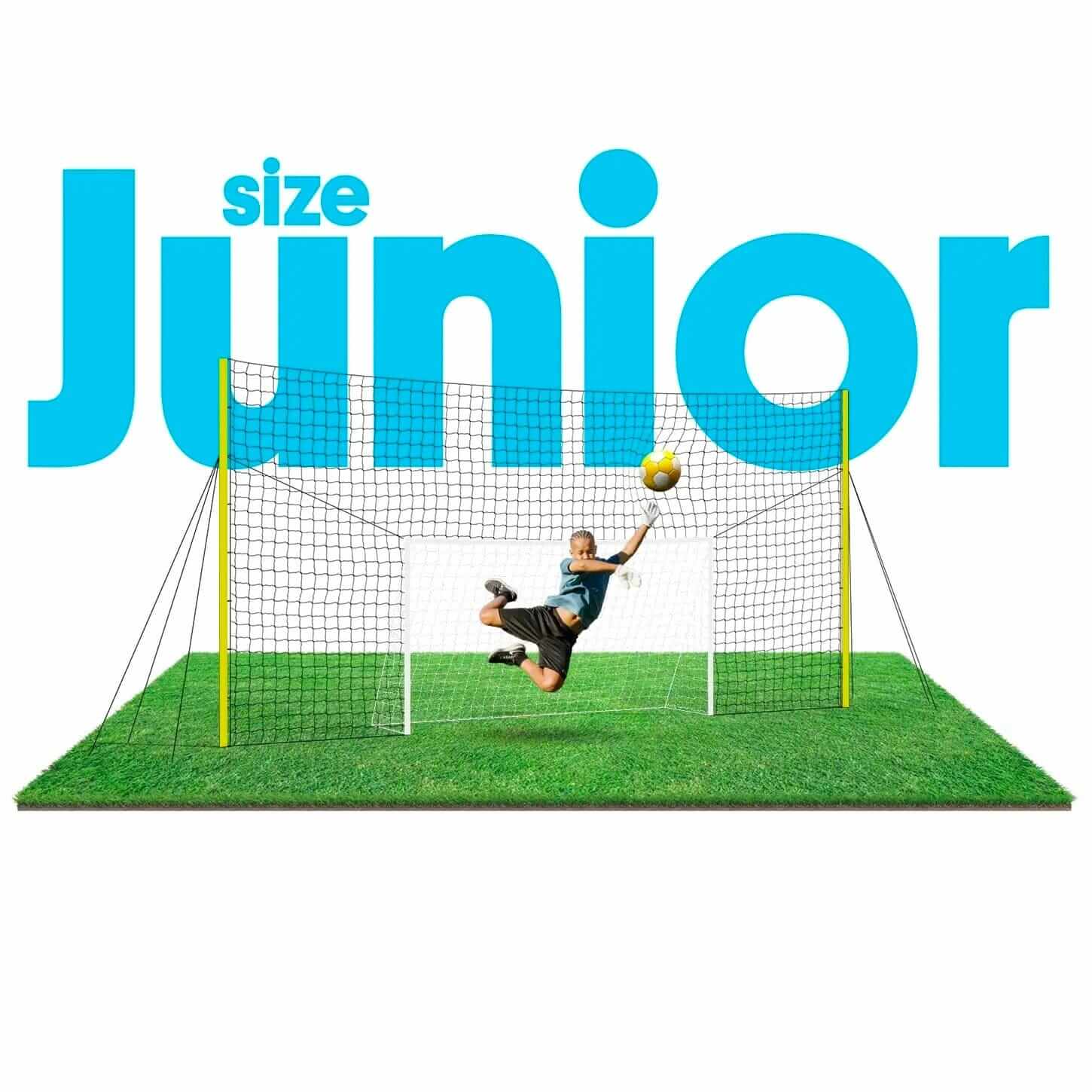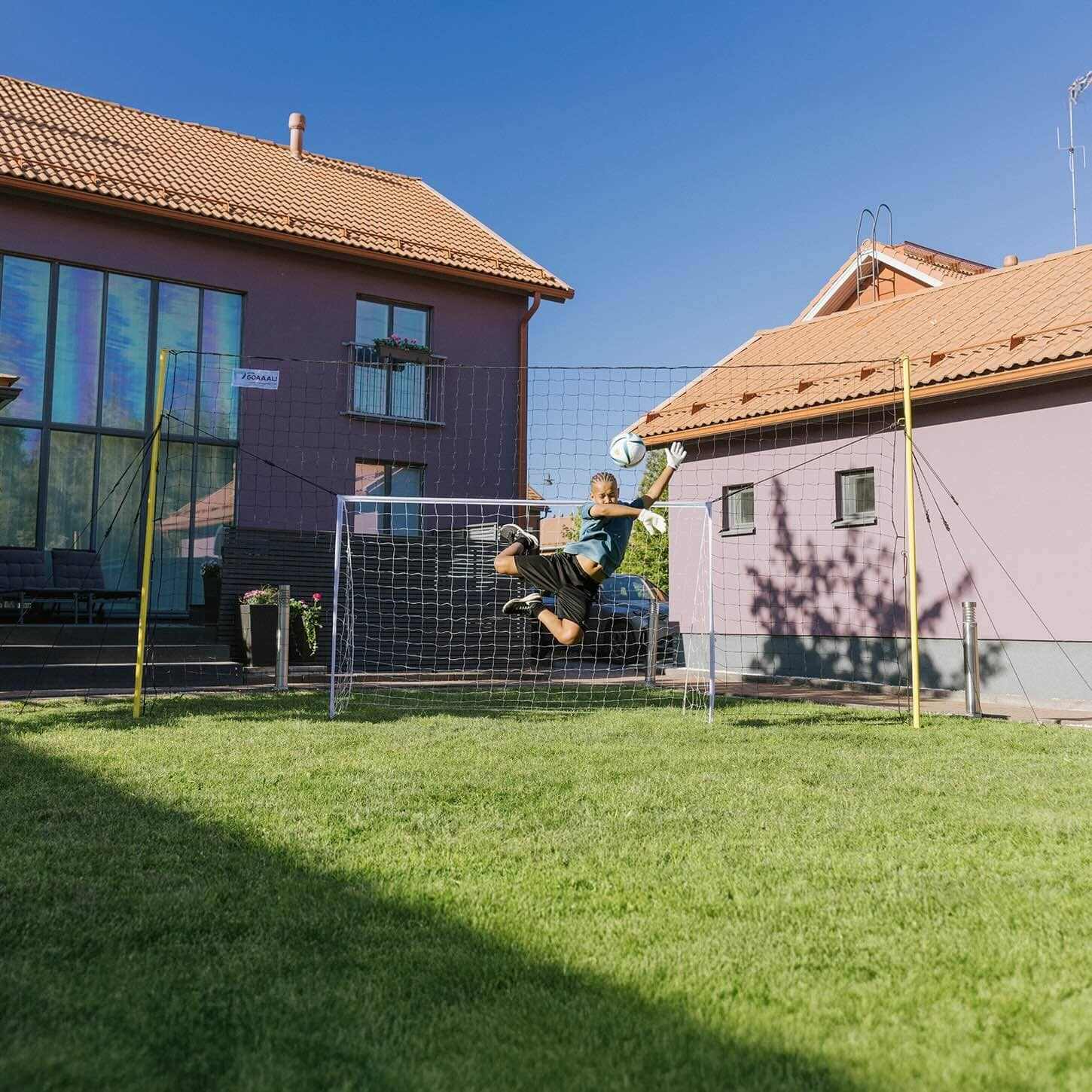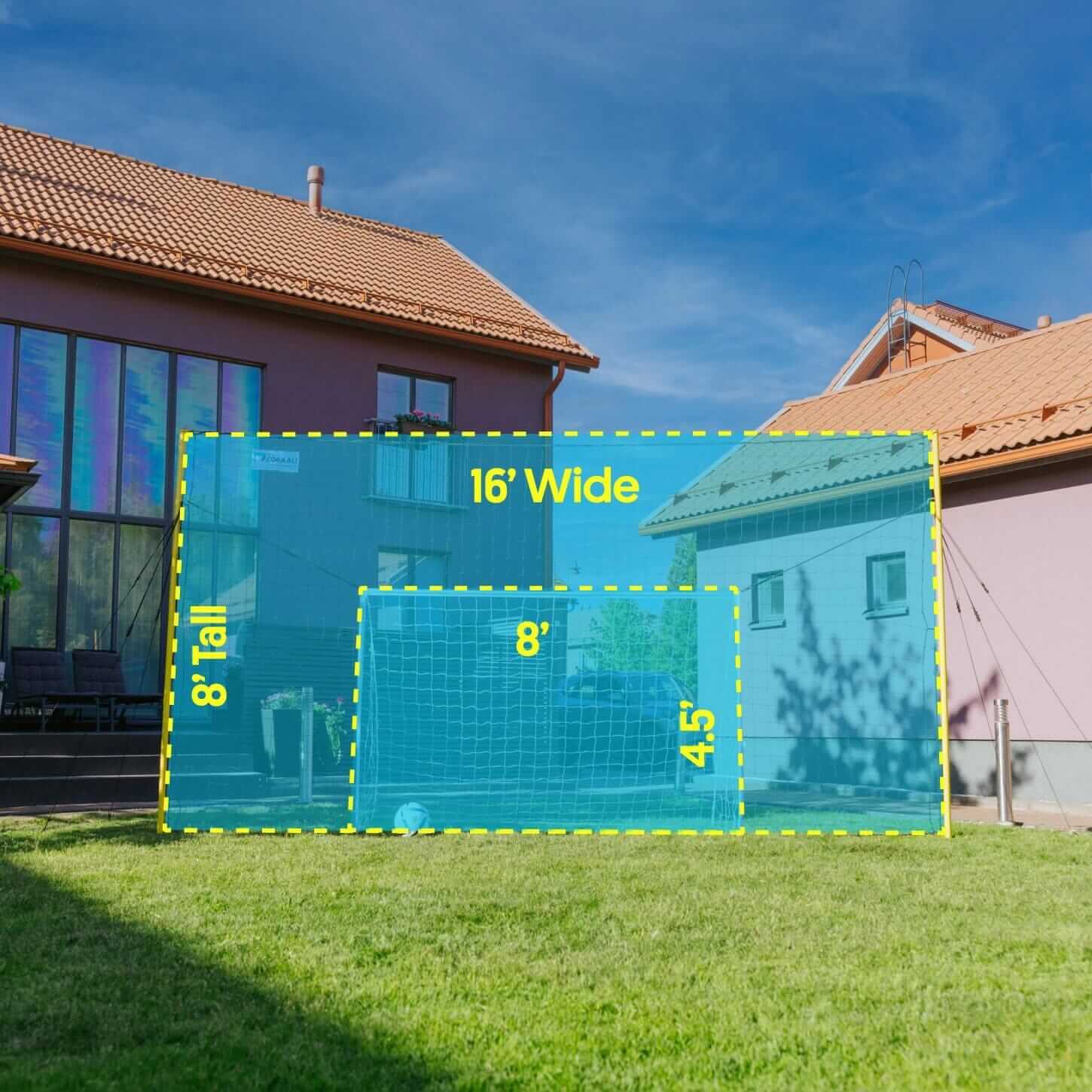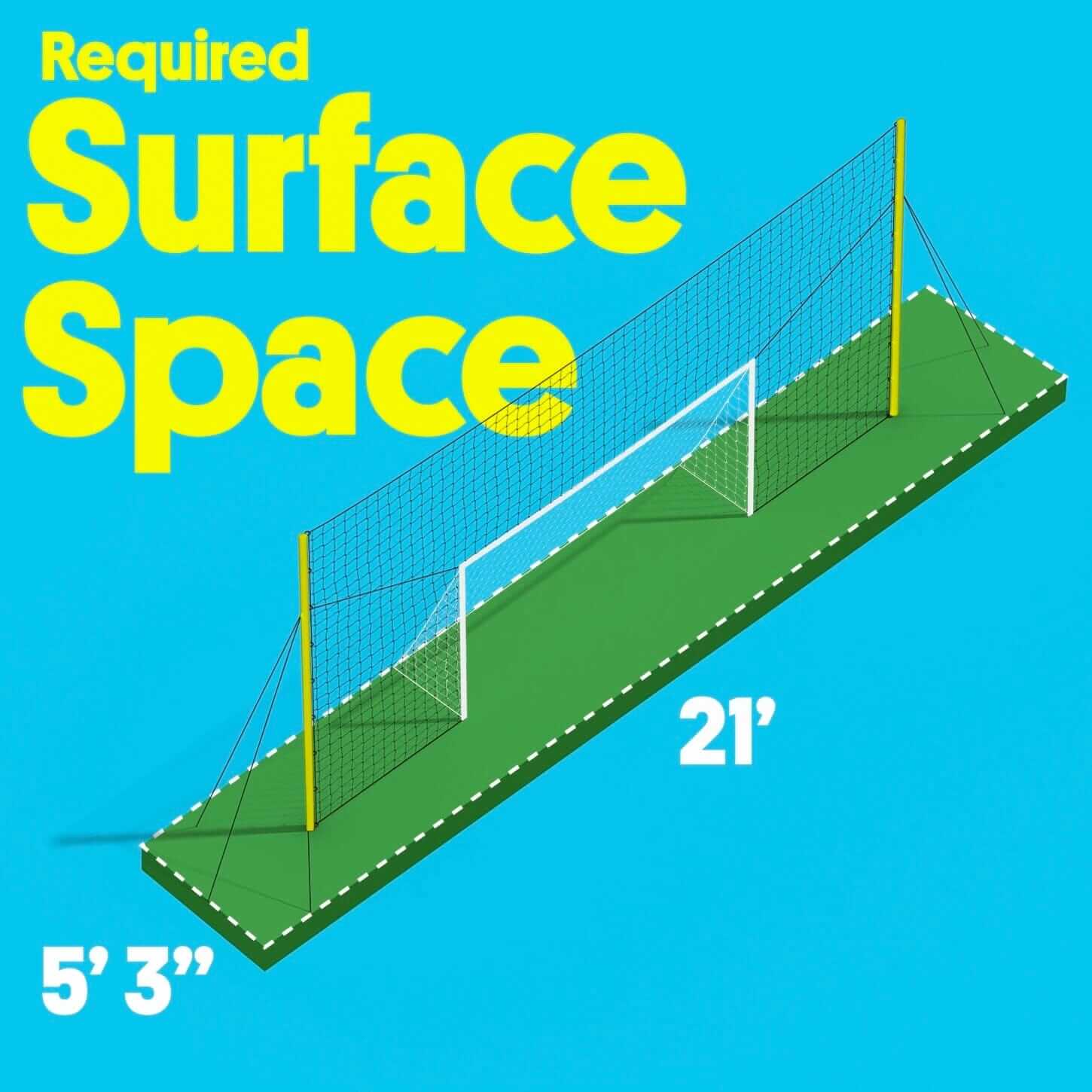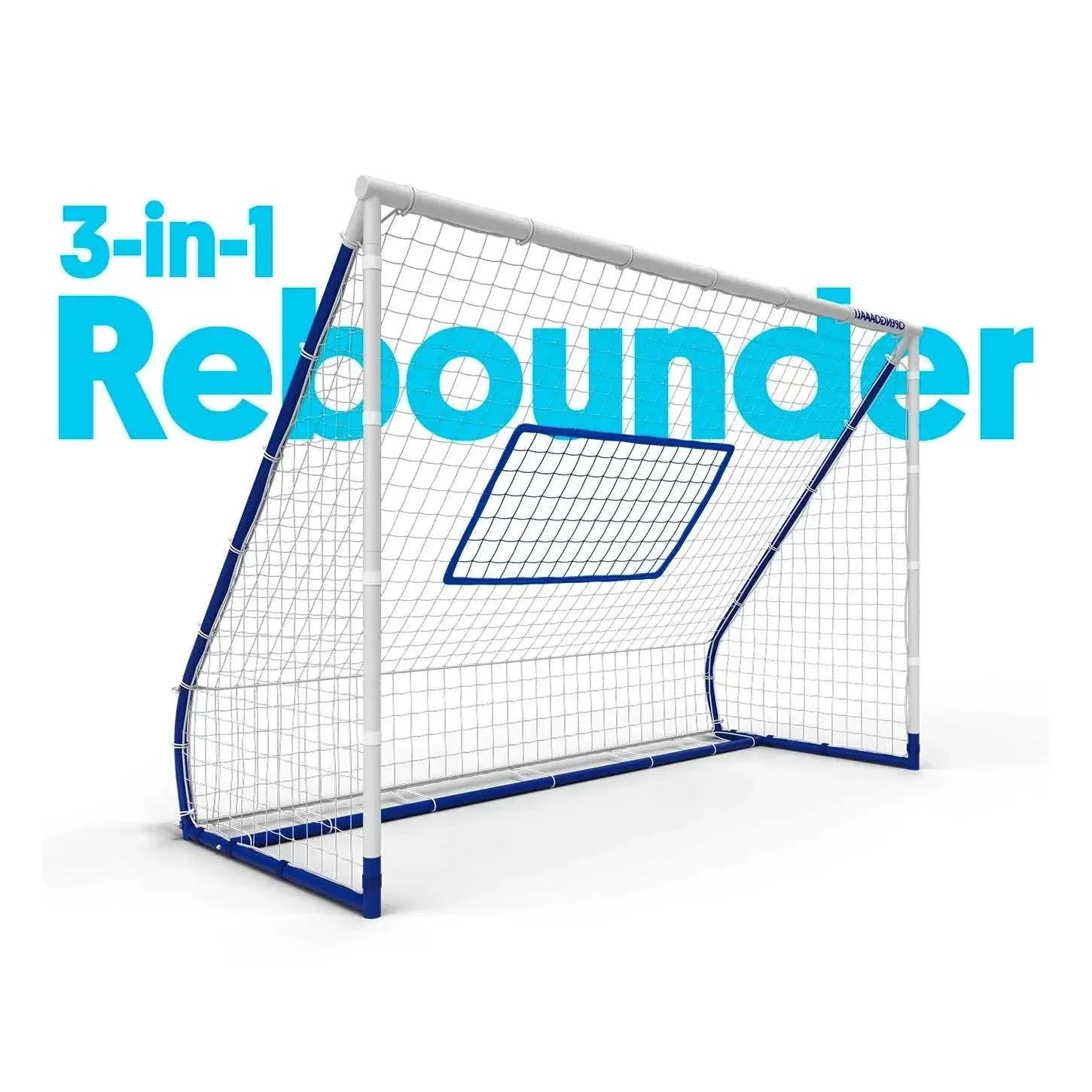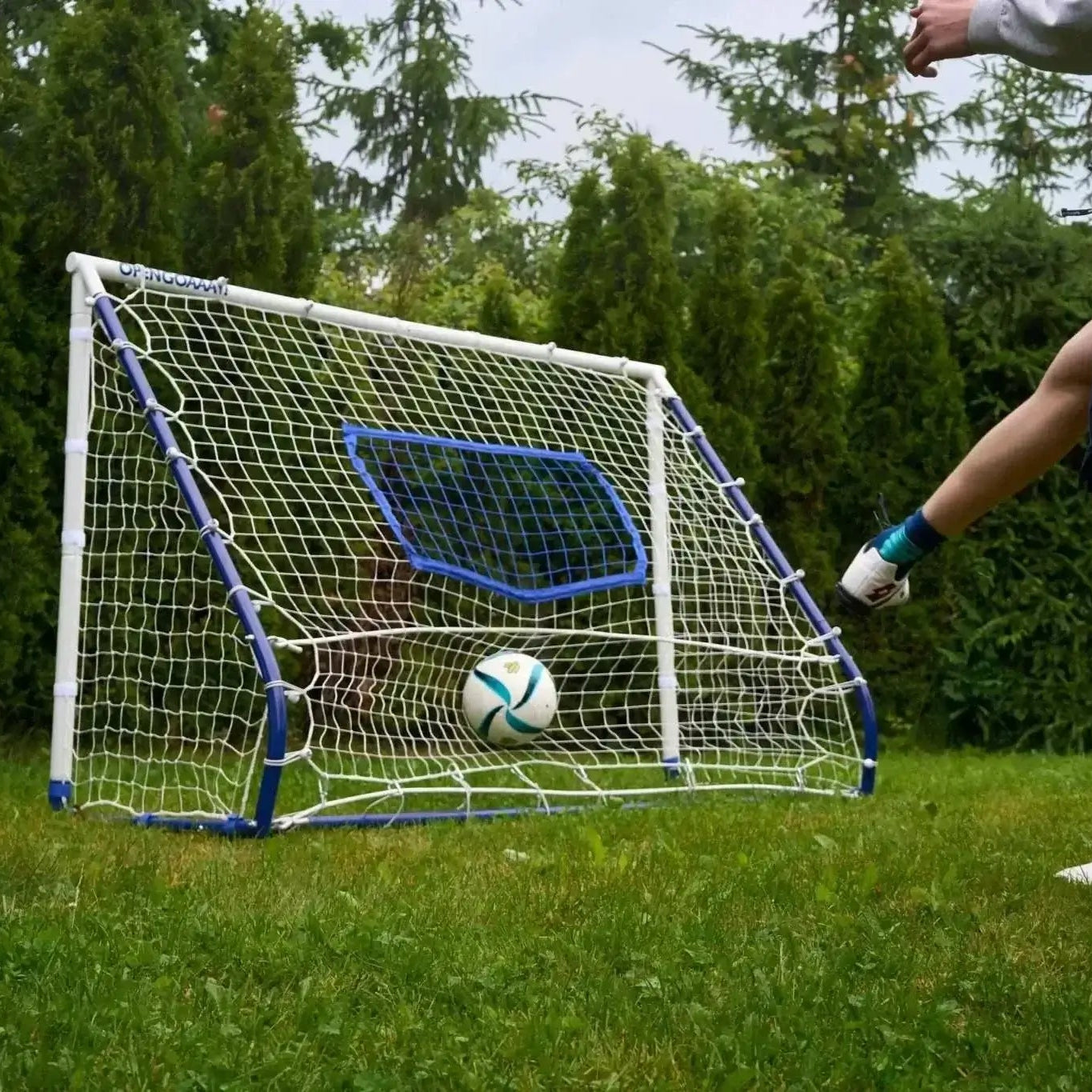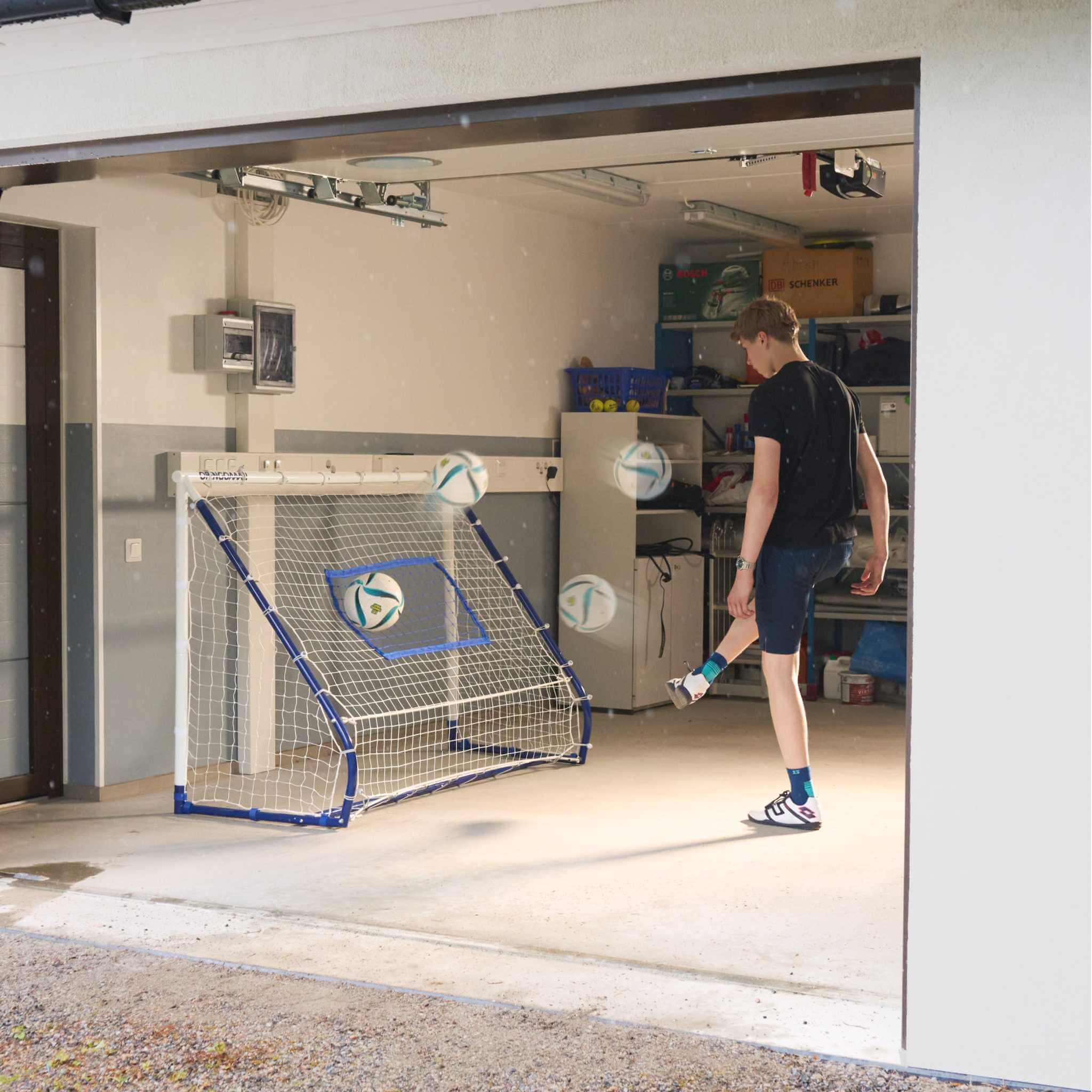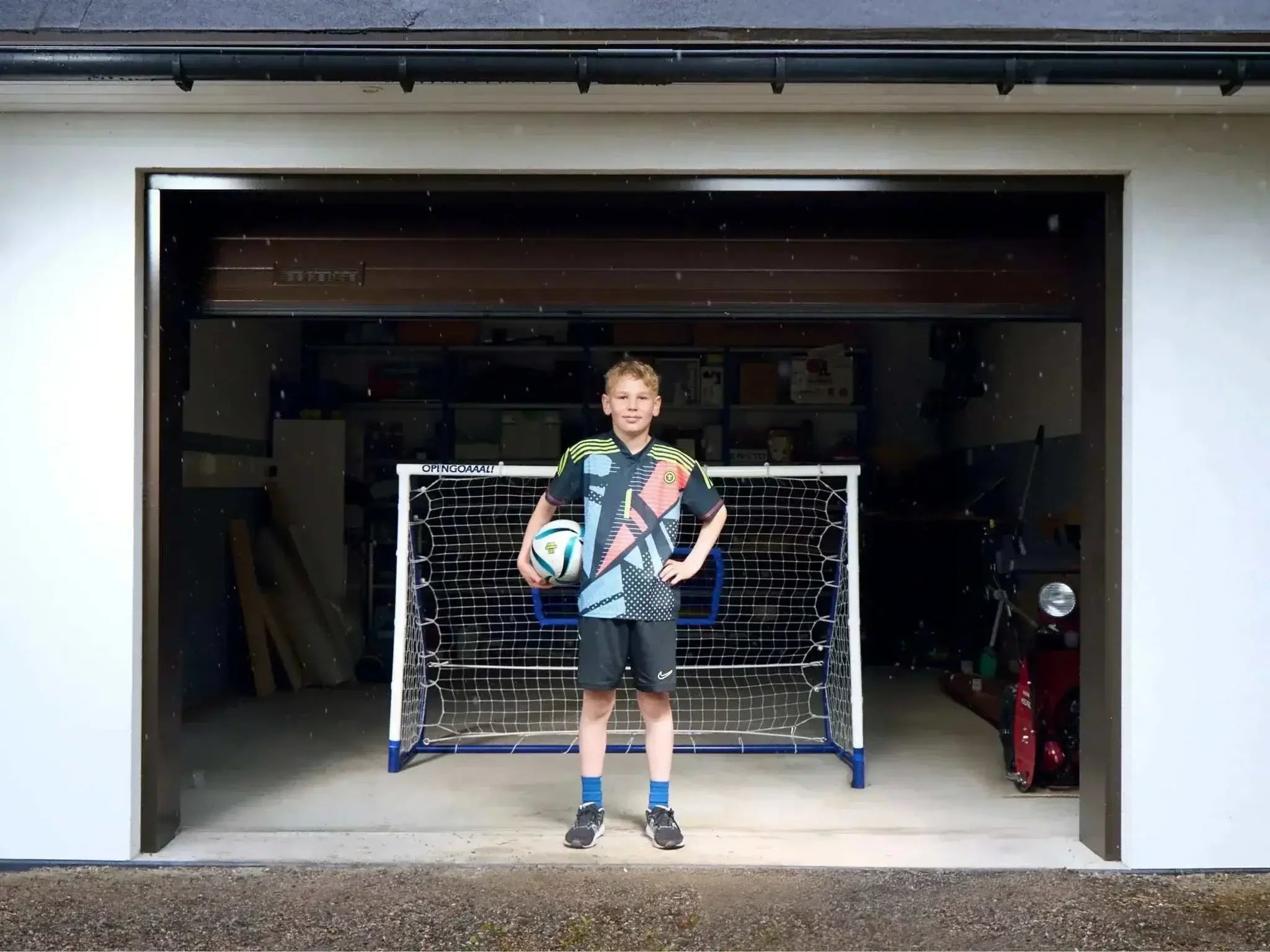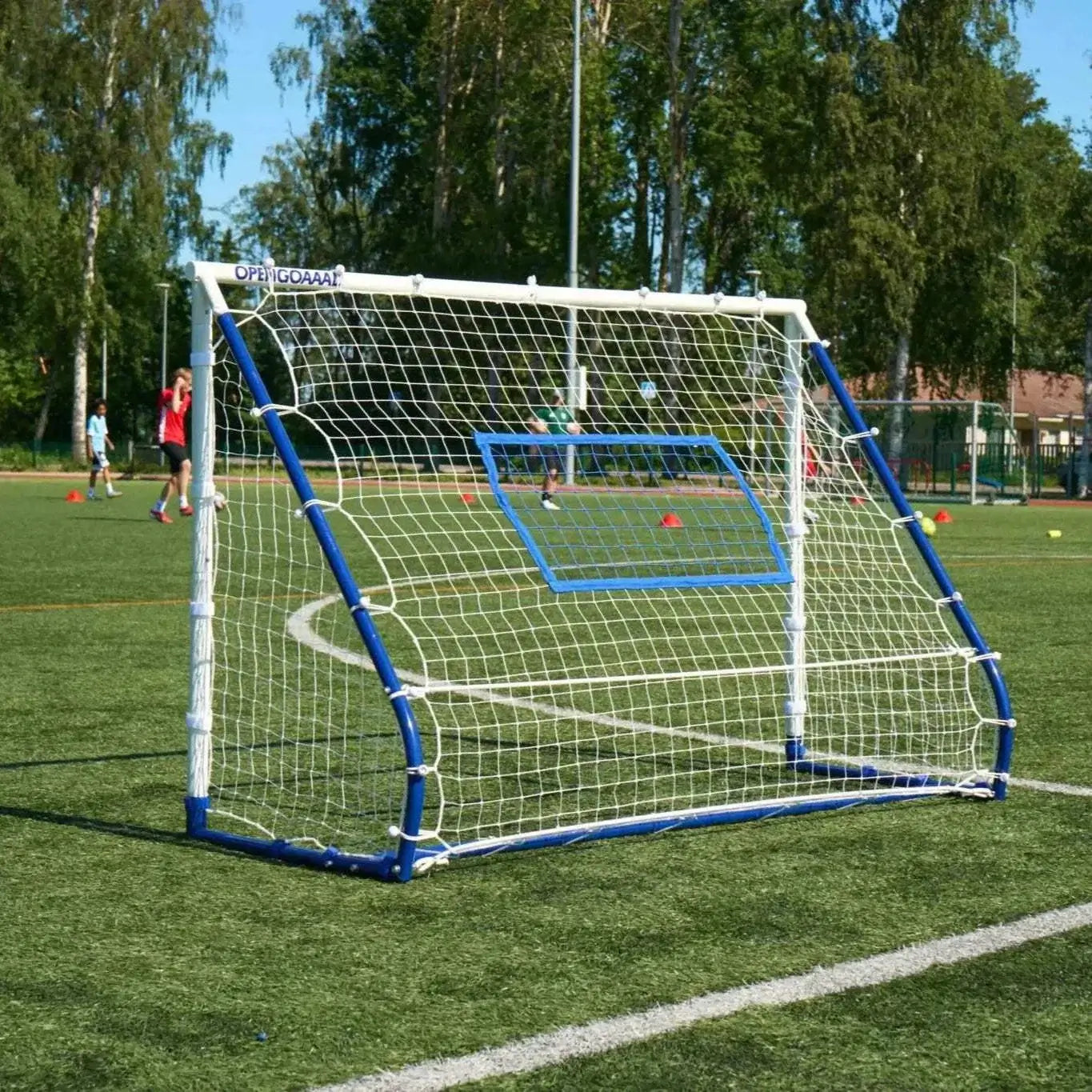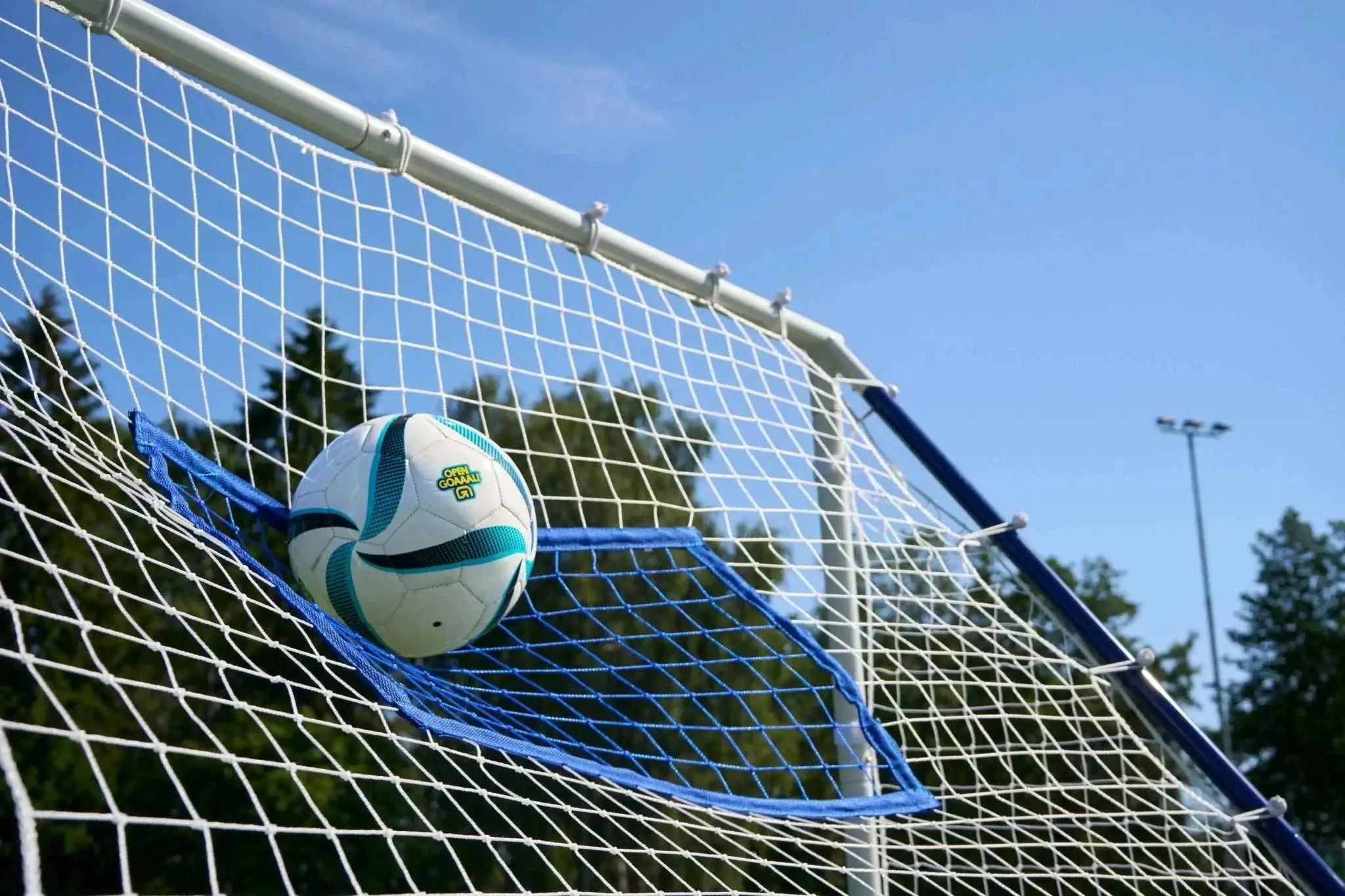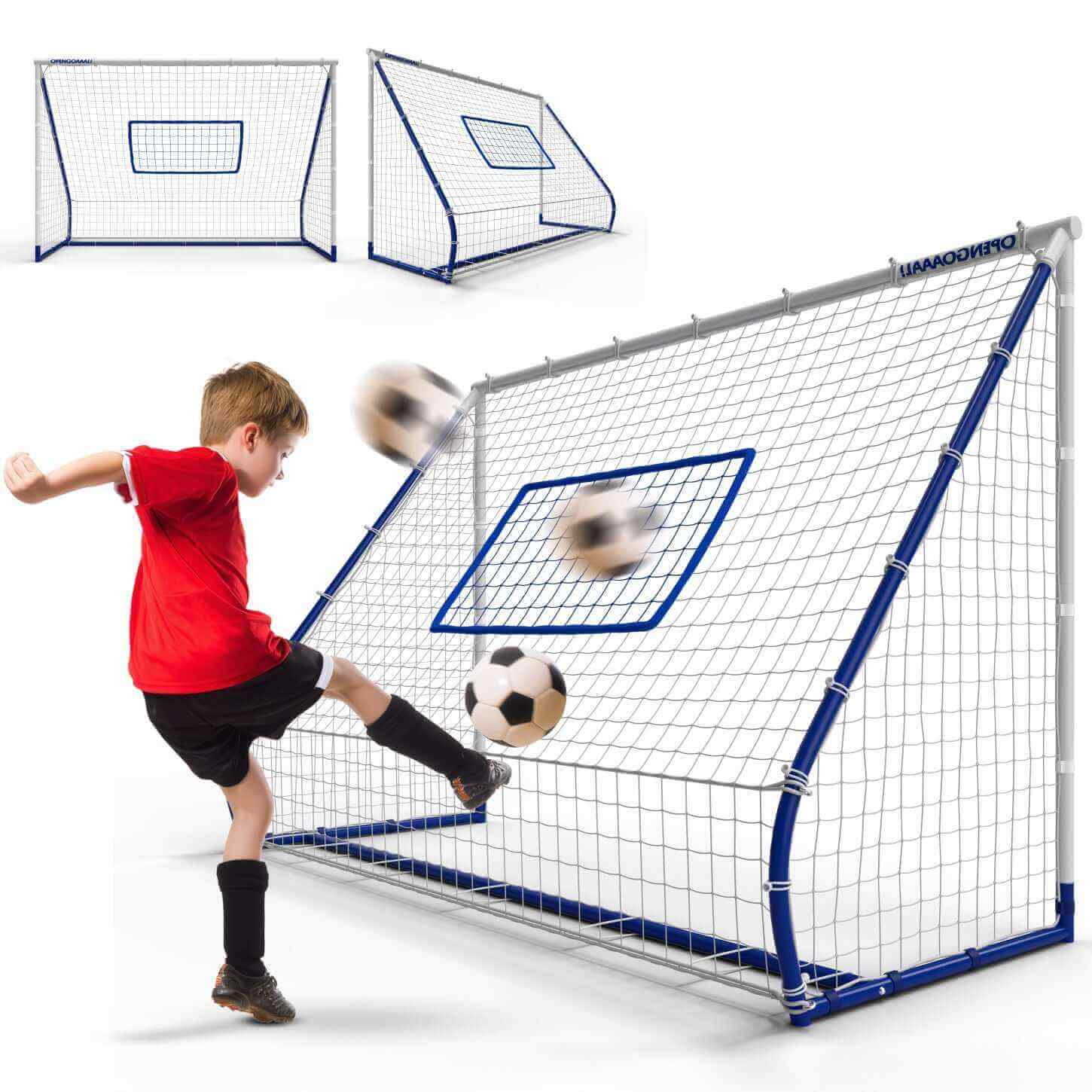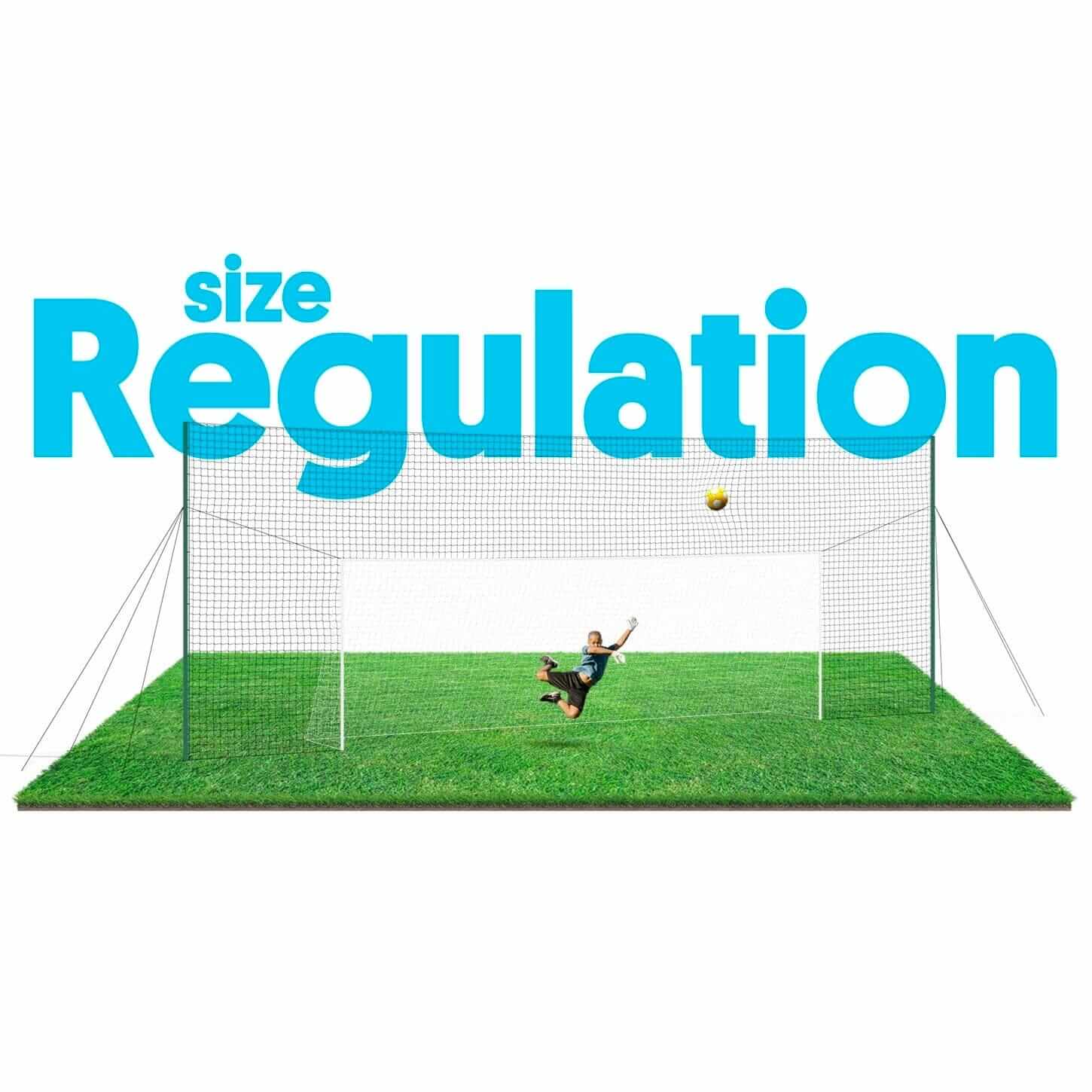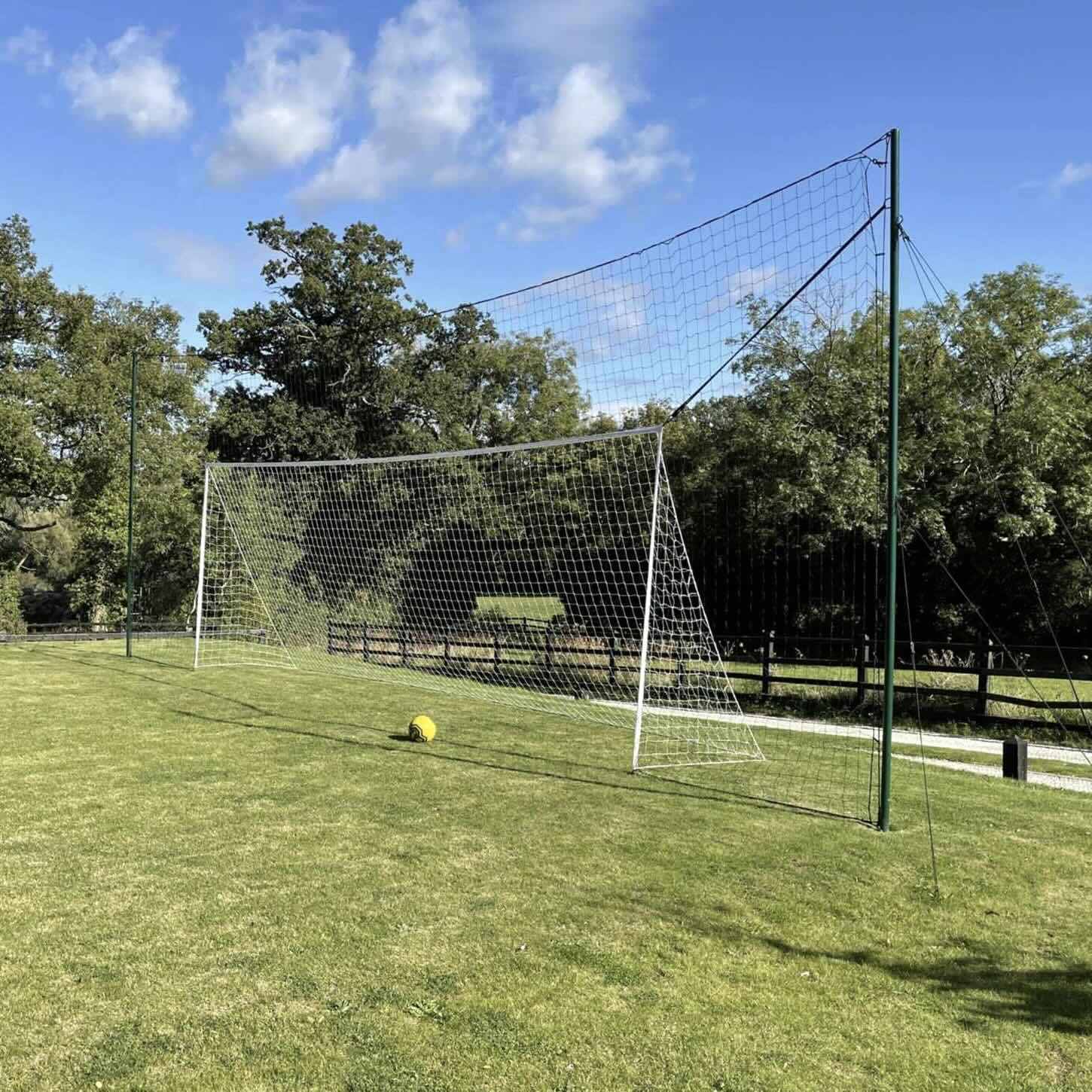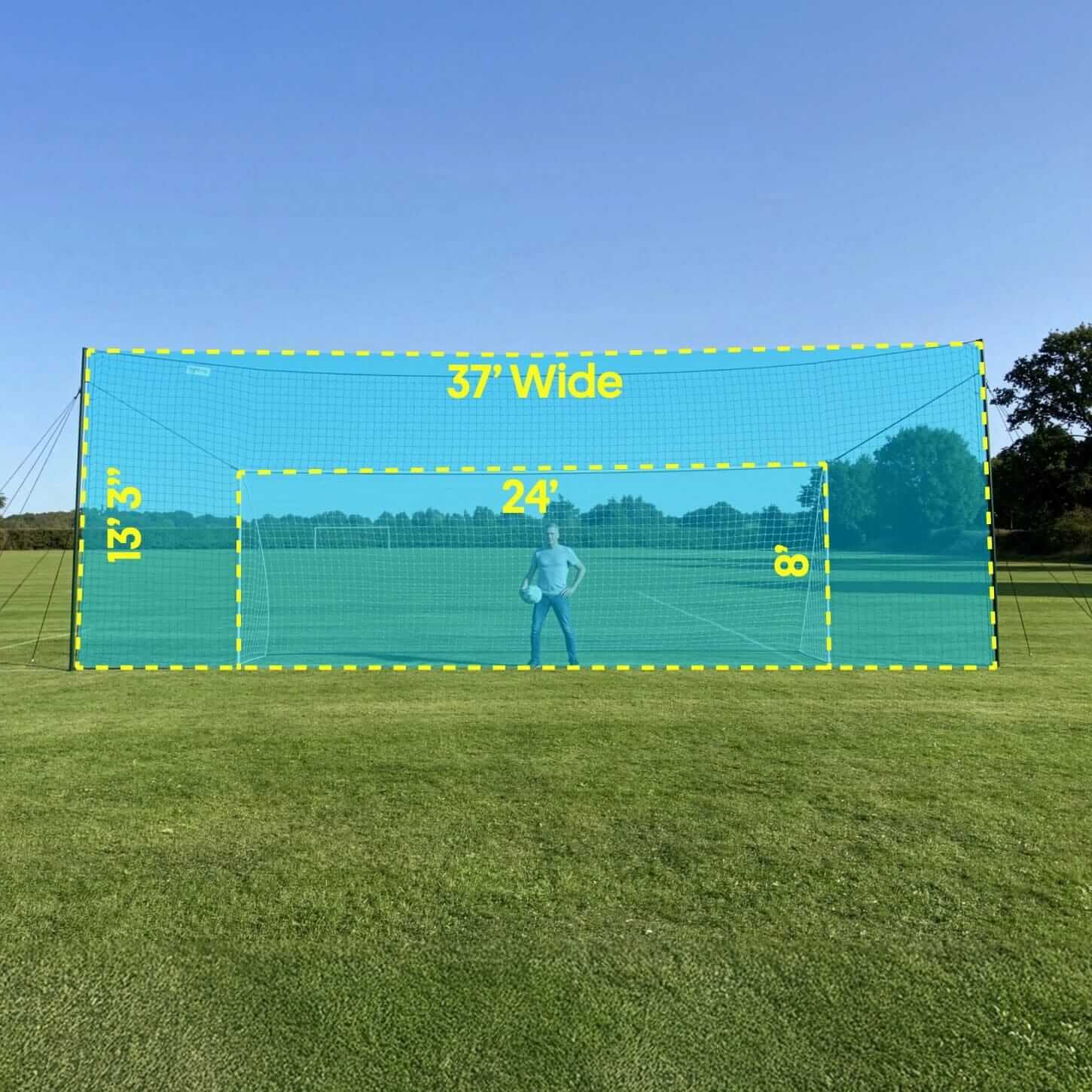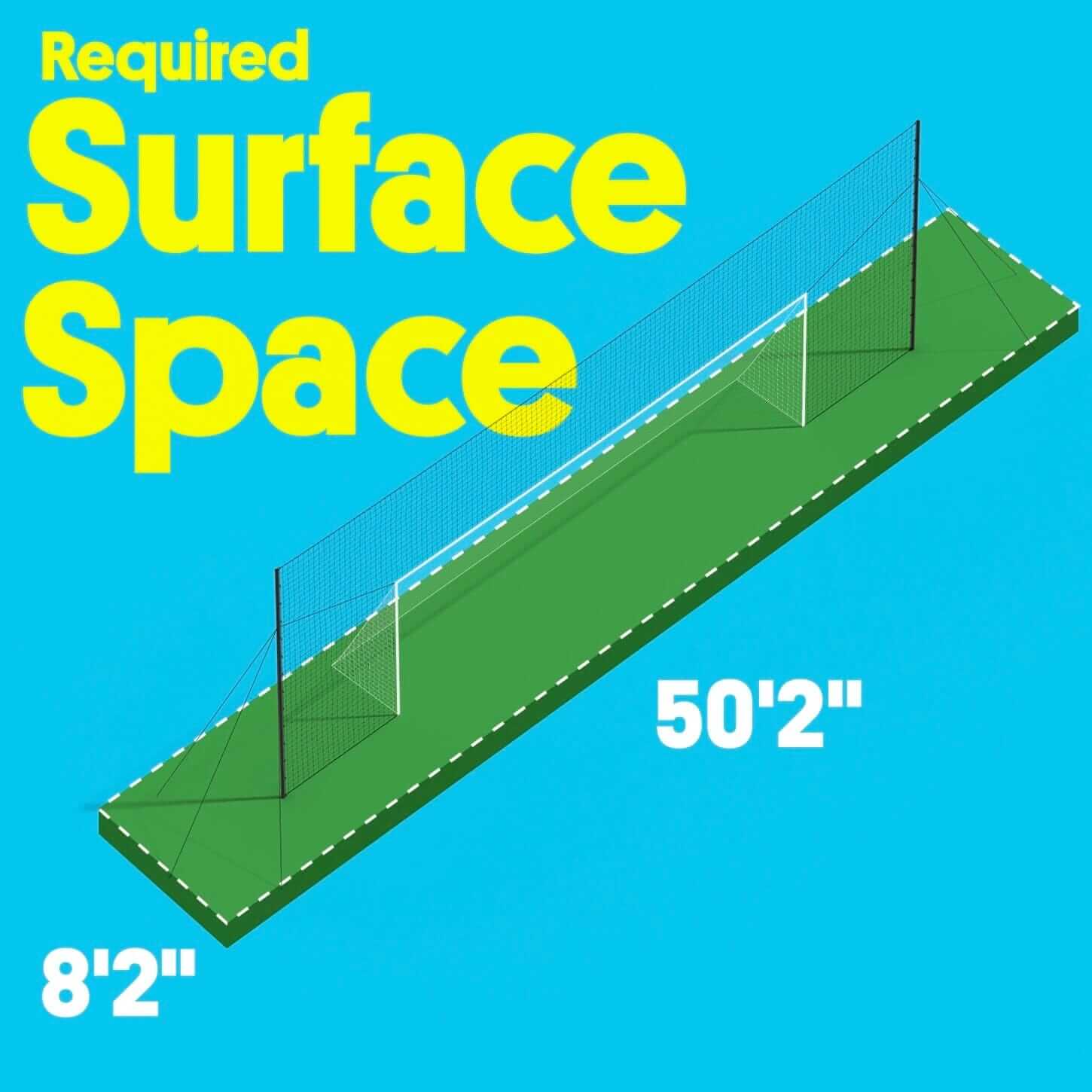
Soccer dribbling is one of the most important skills you can teach your athlete from a young age. It’s a fundamental that never goes away and will continue to help them as they progress.
Learning a few simple drills can get them focused and motivated while also having a lot of fun along the way.
6 Effective Soccer Dribbling Drills to Improve Control
Improving your kids soccer dribbling skills is one foundational aspect of the sport that will have a huge impact on their performance. Here are six simple, fun, but effective dribbling drills that will help your child control the ball and increase their ball handling confidence.
1. Straight Cone Dribbling

The ultimate goal of dribbling in soccer is to learn how to keep the ball close while maintaining control.
Set up 5-10 cones in a straight line. Each cone should have approximately 2-3 feet between to allow enough space for your player to dribble between them.
Executing The Drill
Have the player stand at the beginning of the cones.
On the whistle, the player will begin dribbling between the cones while controlling the ball and keeping it tight to their body.
Coach the player to use both the inside and outside of their feet as they navigate through the cones.
Once they reach the final cone, instruct them to gain control of the ball, turn it around, and sprint back to the beginning of the drill.
Purpose
The point of this drill is to teach your athlete to keep the ball tight while making short touches. In a game situation, soccer dribbling is all about controlling the ball and not letting it get too far away from you.
The drill requires focus and concentration which can be especially useful for younger players under 10.
2. 1-on-1 Controlled Dribbling
Dribbling soccer balls through cones is important for gaining control but introducing an opponent will help your athlete grow even faster.
For this drill, you’ll section off a portion of the field or yard with cones outlining the corners (approximately 50 by 50 foot depending on your space and player age) Create a goal at each end of the pitch and place the ball in the middle.
Executing The Drill
This is a 1-on-1 match between two players. The ball starts in the middle and either player can start the drill.
The objective is for the player with the ball to dribble past the opponent and score in the goal. Once someone scores, the ball is given to the other player and they take a turn.
Purpose
It’s important to coach your player to conduct this drill with intensity. The drill should be performed at full speed with 100% effort.
This drill allows the athlete to compete against a real person and get a feel for the speed of the game. Make sure they’re controlling the ball and dribbling as much as possible before scoring.
If they’re simply dribbling around the opponent and scoring every time, consider making the playing field smaller or sizing them up with another opponent if possible.
3. Dribbling Attack and Score

This is a great drill if you don’t have soccer training cones but have a soccer goal and at least four players. Effective dribbling in soccer requires the player to know what to do when an opponent comes at them.
In this one, you’ll set up two players as defenders, one behind the other. Behind them is the goalkeeper.
Executing The Drill
One player (the attacker) begins the drill at midfield with the ball and dribbles towards the goal. Once the attacker reaches the gate, the defenders can move horizontally in an attempt to block the attacker from dribbling past them.
If the attacker gets by the defenders they can take a shot on the goal.
If the defenders or goalkeeper get the ball, the attacker goes back to the beginning and the drill begins again.
You can swap players out and alternative positions after each turn.
Purpose
Vision is a necessary skill when dribbling. Novice players tend to look at the ball when they’re dribbling and the purpose of this drill is to get their eyes up so they can see incoming defenders and know where to go with the ball.
Coach your athlete to keep their eyes up and change direction when they see the defender coming after them.
4. Dribbling Knockout
One of the best soccer dribbling tips we can provide is to ensure the kids are having fun while they learn. This drill is enjoyable and competitive but it also has some important skills attached to it.
Set up a perimeter around the playing area depending on the number of players involved.
Executing The Drill
Give each player a soccer ball and have them dribble around the playing area and attempt to knock other players’ soccer balls out of bounds.
When an athlete's soccer ball is knocked out, they have to go outside the perimeter and they’re out of the game until a winner is determined.
If a player kicks or dribbles their own ball out of bounds, they are also out for the rest of the round.
Purpose
This drill allows players to compete against each other and have fun in a more relaxed environment.
The goal is to help them develop ball control and awareness of their surroundings while playing with intensity and speed. If the ball gets too far away from them, they need to know that another player will come up and knock their ball out.
This is a great warm up drill or reward game for younger players.
5. Dribbling Relays

Getting your players to work together to accomplish a goal is great for team building and confidence development.
Set up two lines of cones parallel to each other with approximately 2-3 feet between each. You can add or remove space based on the player's skill level.
Split the team into two equal groups and start them at the beginning of the line with one ball for each team.
Executing The Drill
On the whistle, the first player for each team will begin dribbling between the cones. When they reach the end they have to reverse the direction of the ball and dribble back through again.
Once they reach the beginning, have them make a small touch pass to the next player and then that athlete will repeat the process.
The first team to have all their players complete the drill wins the race. If a player misses a cone or loses control of the ball they have to go back to where they messed up.
Purpose
Teamwork is important in soccer and this drill is a great way to get your players cheering each other on and excited about competing.
It also teaches finesse and control with the ball. Make sure players are keeping the ball tight to their body, making short touches, and using both the inside and outside of their feet to dribble through the cones.
6. Musical Cones

Teaching your athletes to keep their eyes up is one of the most important lessons you can give them. Younger players tend to stare at the ball when they’re dribbling which makes it more difficult for them to succeed in game situations.
Set up cones throughout the playing area in no particular order. Make sure there is one less cone than there are players. If you have six players, set up five cones.
Executing The Drill
Every player gets a ball and the whistle blows. The athletes should dribble the ball around the playing area while keeping it close to their body and not moving too far from the starting area.
When the whistle blows again, each player needs to dribble towards a cone and knock it over using their ball.
The athlete who is unable to knock over a cone is out for that round and can dribble the ball outside the playing area.
Purpose
The main purpose of this drill is to teach your players to keep their eyes up and look around while they’re dribbling. They need to locate the nearest cone so when the whistle blows, they have a plan. This can’t be done if they’re looking down at the ball.
FAQ
How do you practice soccer dribbling?
The best way to improve your soccer players' dribbling is through consistent practice. Focus on keeping the ball close, making short touches, and keeping your eyes up.
What are the four types of dribbles in soccer?
The four most common types of dribbles in soccer are the low dribble, speed dribble, change of pace dribble, and crossover dribble.
How do you improve dribbling speed?
Increasing soccer dribbling speed is about confidence and control. Start with control and focus first and speed will come. As skill level progresses, then you can start incorporating other aspects of the game alongside the dribble drills, such as finishing or crossing drills if you have a soccer net setup.
Final Thoughts
We hope these soccer dribbling drills better equip you to train your players to control the ball and improve their handling skills. Learning how to teach dribbling in soccer will have a huge impact on your athletes performance.
Be consistent, patient, and always have fun. Check out the ultimate backyard soccer goal!



